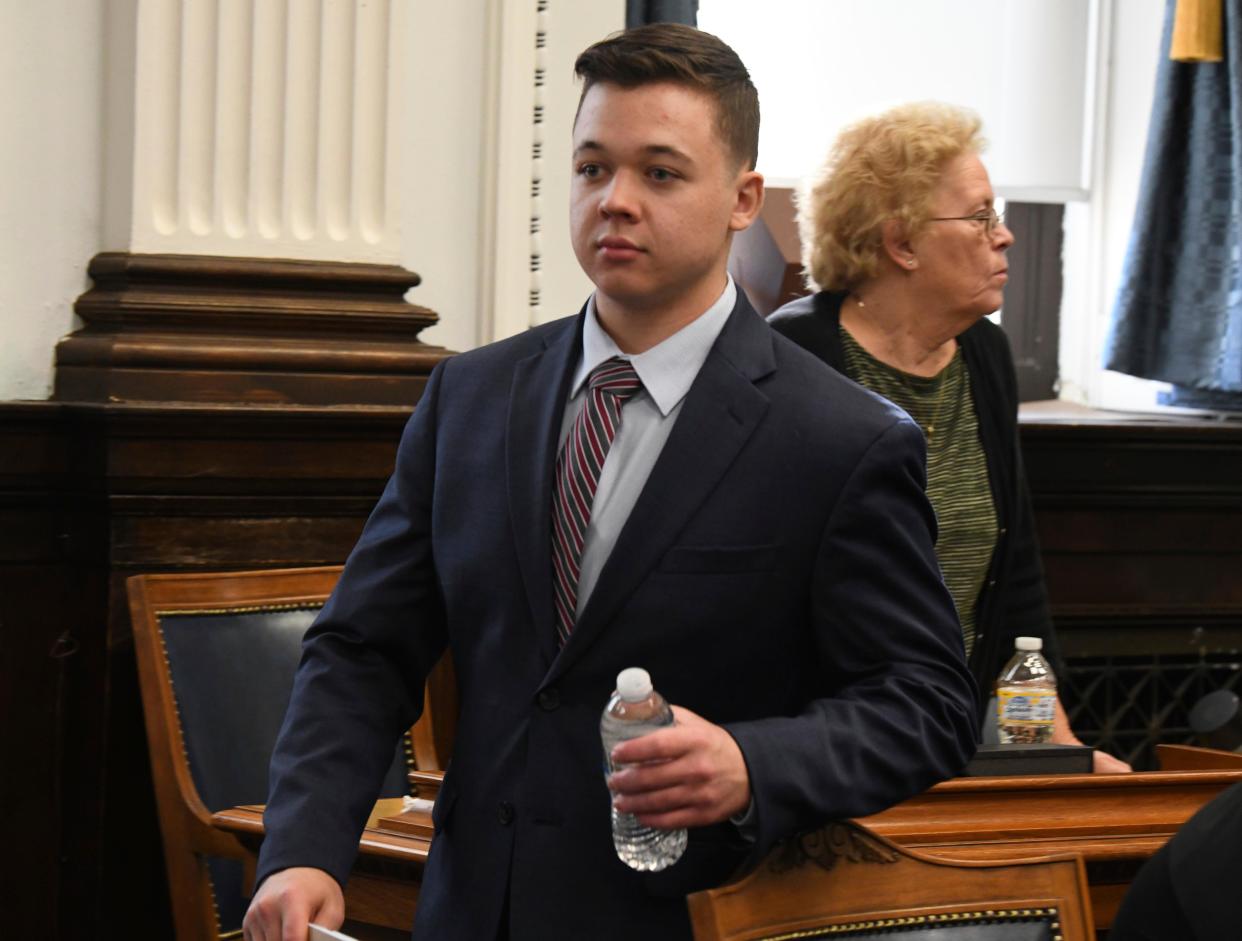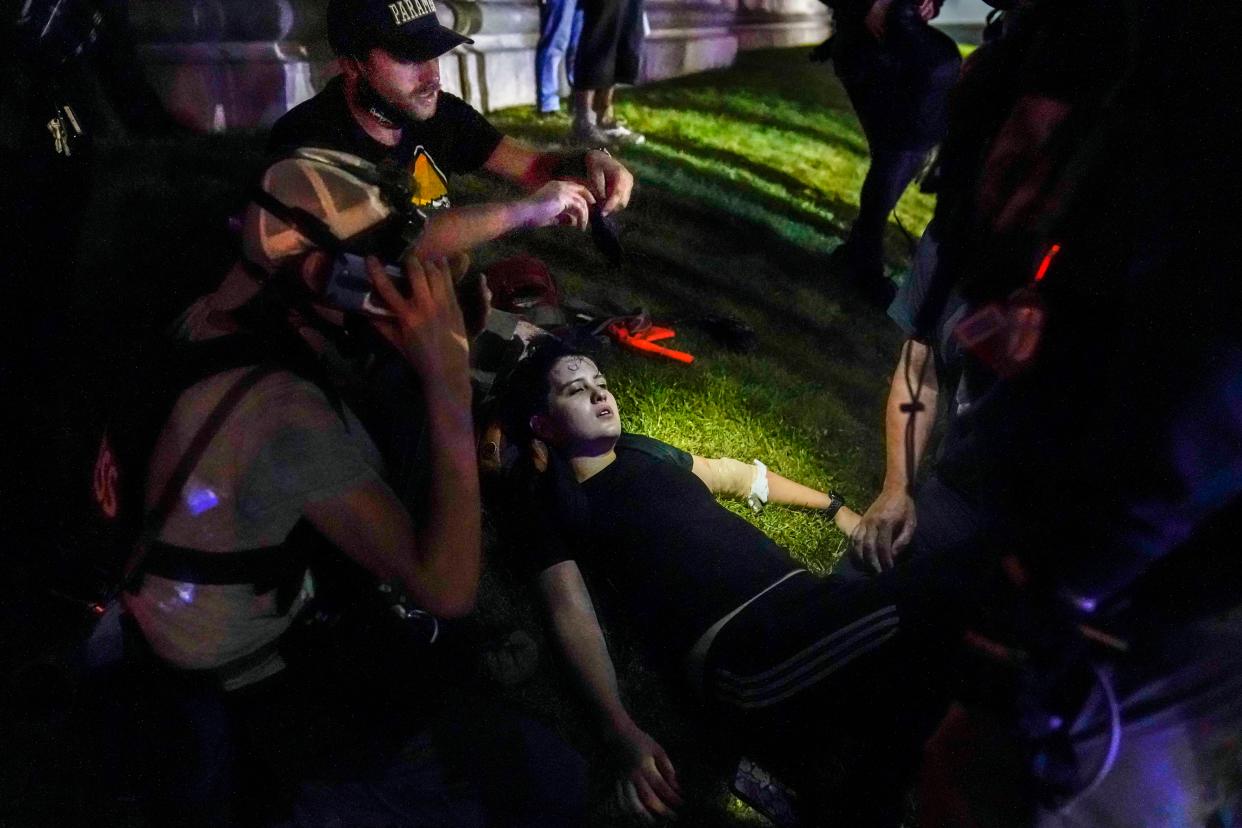Thought ‘I was going to die,’ Rittenhouse shooting victim says
A paramedic who survived a bullet fired by Kyle Rittenhouse during a racial justice protest in Kenosha, Wis., took the stand Monday to describe the chilling confrontation with the teen shooter as his homicide trial entered its second week.
Gaige Grosskreutz, 27, told prosecutors he confronted a rifle-toting Rittenhouse with a gun of his own.
“I thought the defendant was an active shooter,” Grosskreutz said, recounting how he pulled out his holstered pistol.
Asked what was going through his mind as he neared Rittenhouse, he said, “That I was going to die.”

Rittenhouse, now 18, is accused of murdering Joseph Rosenbaum and Anthony Huber during an Aug. 25, 2020, protest over the police shooting of Jacob Blake, a Black man. Rittenhouse’s defense have claimed Rittenhouse acted in self-defense during the shooting.
At the protest, Grosskreutz had a gun in has hand, with his arms raised, when Rittenhouse fired, shooting him in the bicep. A prosecutor asked Grosskreutz why he didn’t shoot Rittenhouse.
“Like I said, that’s not the kind of person that I am. That’s not why I was out there,” he said. “It’s not who I am. And definitely not somebody I would want to become.”

Grosskreutz, a trained paramedic, testified that he ran toward the sound of gunshots and came upon Rittenhouse, who was running the opposite direction.
He asked him what he was doing and if someone was shot. Rittenhouse said: “I’m going to the police. I didn’t do anything.” At the time, Grosskreutz testified, he thought Rittenhouse had said, “I’m working with the police.”
Grosskreutz said he ran along with Rittenhouse trying to speak with him but stopped to turn around and go toward where gunshots were heard. He said he turned back around when he heard Rittenhouse had shot someone.
Grosskreutz said he had attended about 75 protests that summer, and offered to give medical help to anyone who needed it. On the night of Aug. 25, he testified, he was wearing a hat that read “Paramedic” and was carrying medical supplies, as well as his loaded pistol. He said he’d given medical treatment to 10 people that night.

“I believe in the Second Amendment. I’m for people’s right to carry and bear arms,” he said, explaining why he was armed. “And that night was no different than any other day. It’s keys, phone, wallet, gun.”
However, when Rittenhouse fell after shooting Huber, he aimed his gun toward the crowd and pulled the trigger, though the gun did not fire. Grosskreutz said he put his arms in the air as Rittenhouse re-racked his rifle.
“Re-racking the weapon in my mind meant that the defendant pulled the trigger while my hands were in the air, but the gun didn’t fire, so by re-racking the weapon I inferred the defendant wasn’t accepting my surrender,” he testified.

But he said he never intended to shoot Rittenhouse.
“I was never trying to kill the defendant. In that moment I was trying to preserve my own life, but doing so while taking the life of another is not something I am capable or comfortable doing,” Grosskreutz said.
Grosskreutz was shot in the bicep. Several of the jurors grimaced at video that showed his injuries.
During cross-examination, Rittenhouse defense team showed photos of Grosskreutz pointing his gun at Rittenhouse who was on the ground. Defense attorney Corey Chirafisi asked: “It wasn’t until you pointed your gun at him, advanced on him … that he fired, right?”
“Correct,” Grosskreutz replied. During follow-up questioning by the prosecution, Grosskreutz said he only pointed his gun at Rittenhouse unintentionally.
Under Wisconsin’s self-defense law, deadly force can be used only if “necessary to prevent imminent death or great bodily harm.” Unlike Grosskreutz, the men Rittenhouse shot and killed were unarmed; Huber had hit Rittenhouse with a skateboard after he shot Rosenbaum. Grosskreutz pointed his pistol at Rittenhouse after both Rosenbaum and Huber were shot.
Rittenhouse is charged with multiple felonies, including first-degree intentional homicide and first-degree reckless homicide for killing Rosenbaum and Huber and first-degree attempted intentional homicide for wounding Grosskreutz.
He’s pleaded not guilty to all charges. He faces life in prison if convicted.
With News Wire Services
